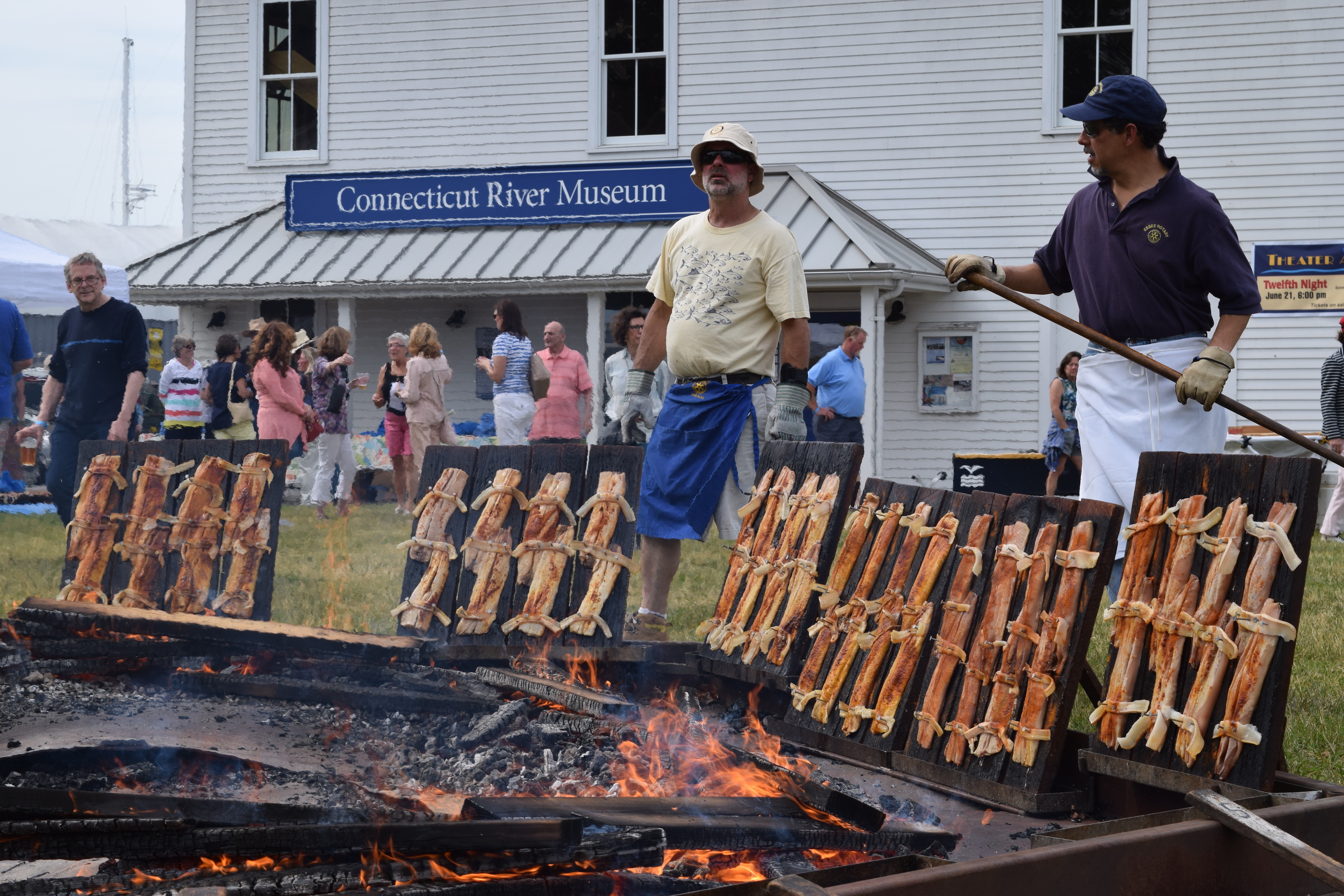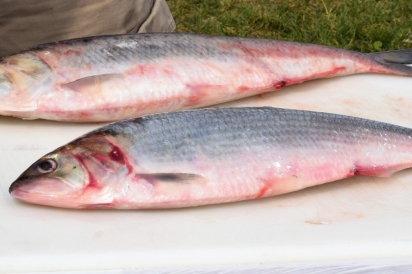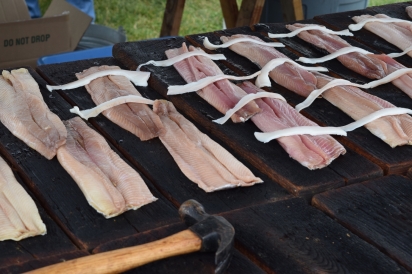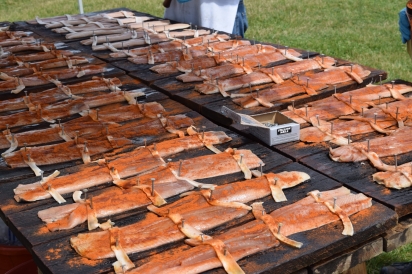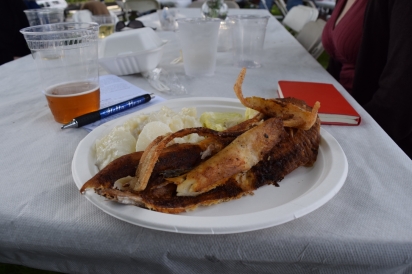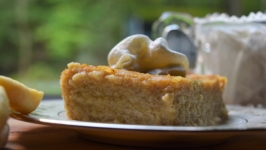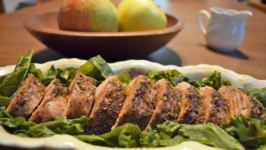Shad: Connecticut's Most Delicious Fish
Leaving their home in Atlantic waters, schools of shad begin a long ascent up the Connecticut River to spawn in late March, just as spring waters begin to warm to about 50 degrees. The spawning season lasts until June, when the fish make their way back to the coast. From Old Saybrook to the Holyoke, Massachusetts dam, fishermen line the river’s banks and wade the shallows to snag this largest member of the herring family. Some anglers swear by flies or lures, some use tackle or buy specialized “shad darts.” Many get lucky by just throwing a line, as shad moving upstream will hit almost anything and are easily netted, so fishermen construct piers around the river’s mouth or set up sheds nearby.
This remarkable fish has been an important part of Connecticut’s aquaculture and river ecology since pre-colonial times. Native tribes depended on the shad and constructed weirs along on the banks of the Connecticut River (known to them as the Quinnehtukqut) to trap the fish, using nets and spears to gather them. Smoking or drying could preserve the fish, and “planking,” a method still used today, involved securing the fish on flat pieces of wood and setting them around a large fire.
When colonists arrived, commercial enterprises took off, salting the meat and selling it across the eastern seaboard, down to the West Indies, and over to Europe, bringing economic as well as nutritional advantages. Shad pack more omega-3 fats than salmon and were among the provisions gathered and sent by Governor Jonathan Trumbull to help feed Washington’s army in the winter of 1778. In 1796, cookbook pioneer Amelia Simmons called shad “elegant,” “rich,” and “full of flavor.” Even Mark Twain craved “Connecticut shad,” writing about them in A Tramp Abroad. Today, these “most delicious” fish continue to be local favorites, especially among those who can catch them fresh. However, it was not until 2003 that the General Assembly officially designated shad as the state fish.
Like bluefish, the state’s “other” fish, shad is oily with a distinctive taste, but one of the most flavorful white fish you can eat. Unfortunately, even the heartiest of piscivores have trouble due to the frustrating bones—about 1,300 in a typical shad. While becoming an expert de-boner could establish your local celebrity, the practice is also becoming a lost art. To get around this, some people recommend picking out the bones with fingers or fork and eating the meat bite by bite. Other methods include poaching or smoking, followed by flaking the meat for fritters or shad cakes, or processing it with mayonnaise for fish salad or pâté.
For diehards, the best part of the female shad is the roe. The lobes can be simmered with onion and bay leaves or wrapped in bacon then grilled or broiled, sometimes enjoyed with scrambled eggs. Some enjoy the “milt” floured, seasoned, sautéed in butter, then spread on toast.
The traditional and perhaps best way to eat the fish itself is still the Native American method of “planking.” Season fillets with strips of bacon or salt pork and hefty doses of Old Bay, then nail them onto an oak board. Place the boards around a large pit fire, angled about 60 degrees and 18 inches away from the flames.
Since setting up a backyard planking pit might not be reasonable for every home cook, take advantage of events like Windsor’s Shad Derby Festival, which runs March through May and includes a fishing tournament and parade. Outside the Connecticut River Museum, the Essex Rotary Club sponsors their annual Shad Bake in early June. On another day, check out the Haddam Shad Museum then head up to Rocky Hill to Hale’s Shad market and eatery. Any of these options will convince you that the best way to sample shad is with others. Join a late-spring fête, let experts take care of scales and bones, and enjoy a community fire. Grab a beer, and gaze out over the river’s edge while celebrating Connecticut’s historic fish.
For preparation at home, try baking the fish whole with cracker crumb stuffing or wrapping fillets in foil with garlic, shallots, lemon, and herbs. Or, try another tasty, traditional recipe by baking them in cream.


